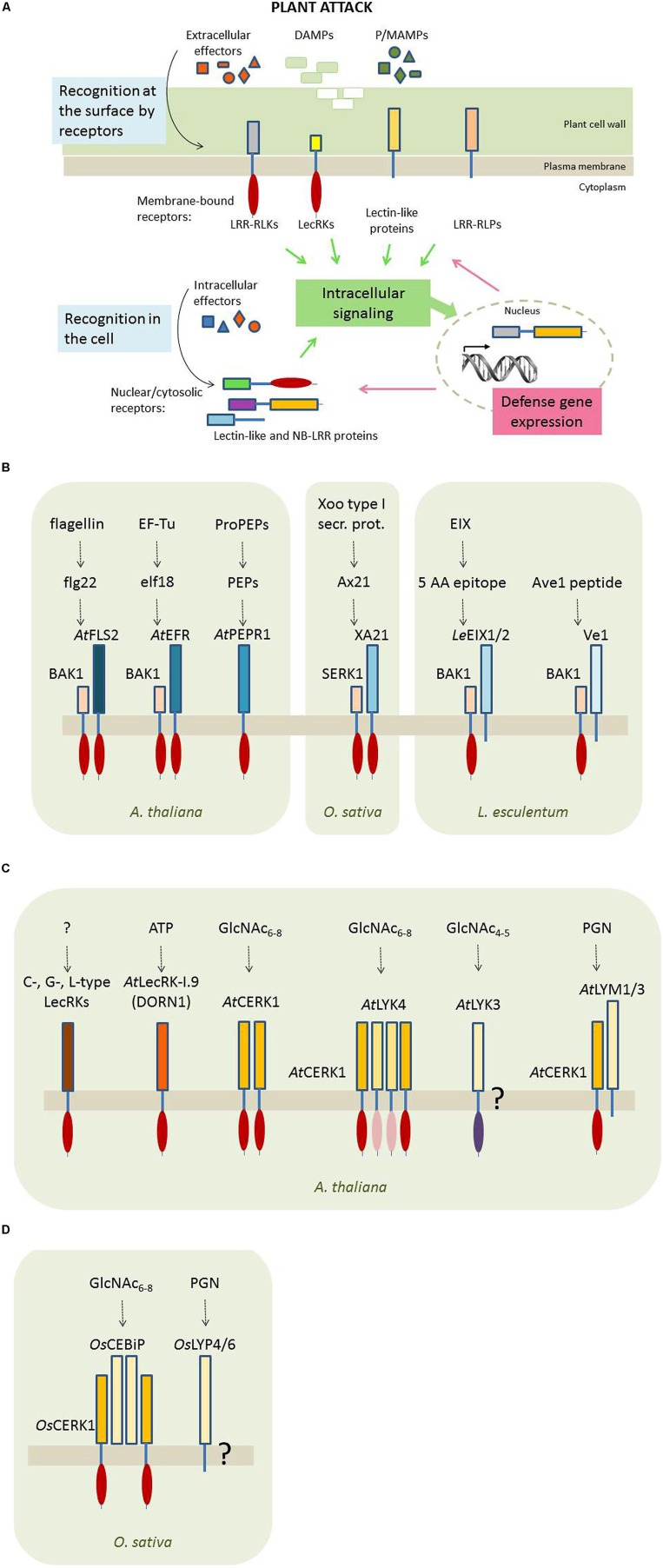FIGURE 1.
Plant innate immunity. (A) Perception of pathogen/microbe-associated molecular patterns (P/MAMPs), damage-associated molecular patterns (DAMPs) and pathogen-derived effector proteins. Plants sense P/MAMPs, DAMPs, and effectors through membrane-bound and intracellular (soluble) receptors. Four types of membrane-bound receptors can be distinguished: the LRR-type receptor kinases (LRR-RLKs) and proteins (LRR-RLPs), and the receptor kinases and proteins with lectin domains (called LecRKs and lectin-like proteins, respectively). Soluble receptors known thus far include NB-LRR proteins as well as nucleocytoplasmic lectins. Upon ‘danger’ perception, these receptors trigger intracellular signals which ultimately will result in altered expression of defense-related genes. Legend: ellipses represent kinase domains; bars represent other protein motifs, including LRRs and lectin domains. (B) Transmembrane PRRs detect P/MAMPs through protein–protein interactions. Bars represent LRR domains, red ellipses indicate functional kinase domains. (C) Transmembrane PRRs with lectin domains identified in Arabidopsis thaliana. In the case of the LysM domain evidence supports protein–carbohydrate interactions to detect P/M/DAMPs. Bars represent lectin domains, including C-, G-, and L-type (brown) and LysM (yellow) domains. Ellipses represent kinase domains (red = functional, pink = non-functional, purple = putative kinase domain). (D) Transmembrane PRRs with lectin domains identified in Oryza sativa. The LysM domain recognizes P/M/DAMPs through specific binding of chitin fragments. Bars represent the LysM lectin domains; ellipses represent functional kinase domains.

